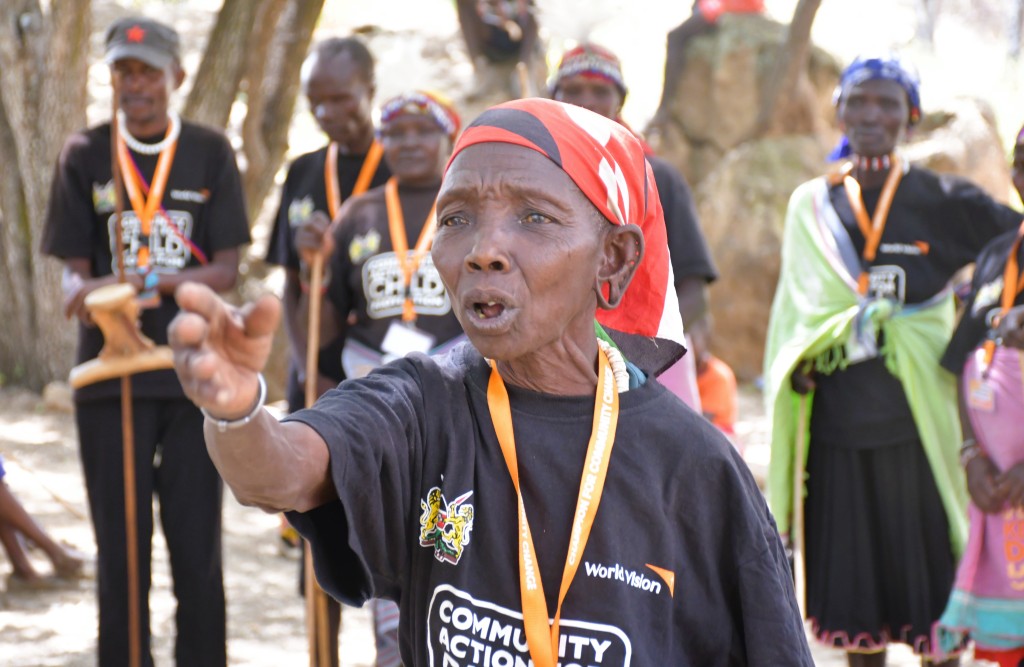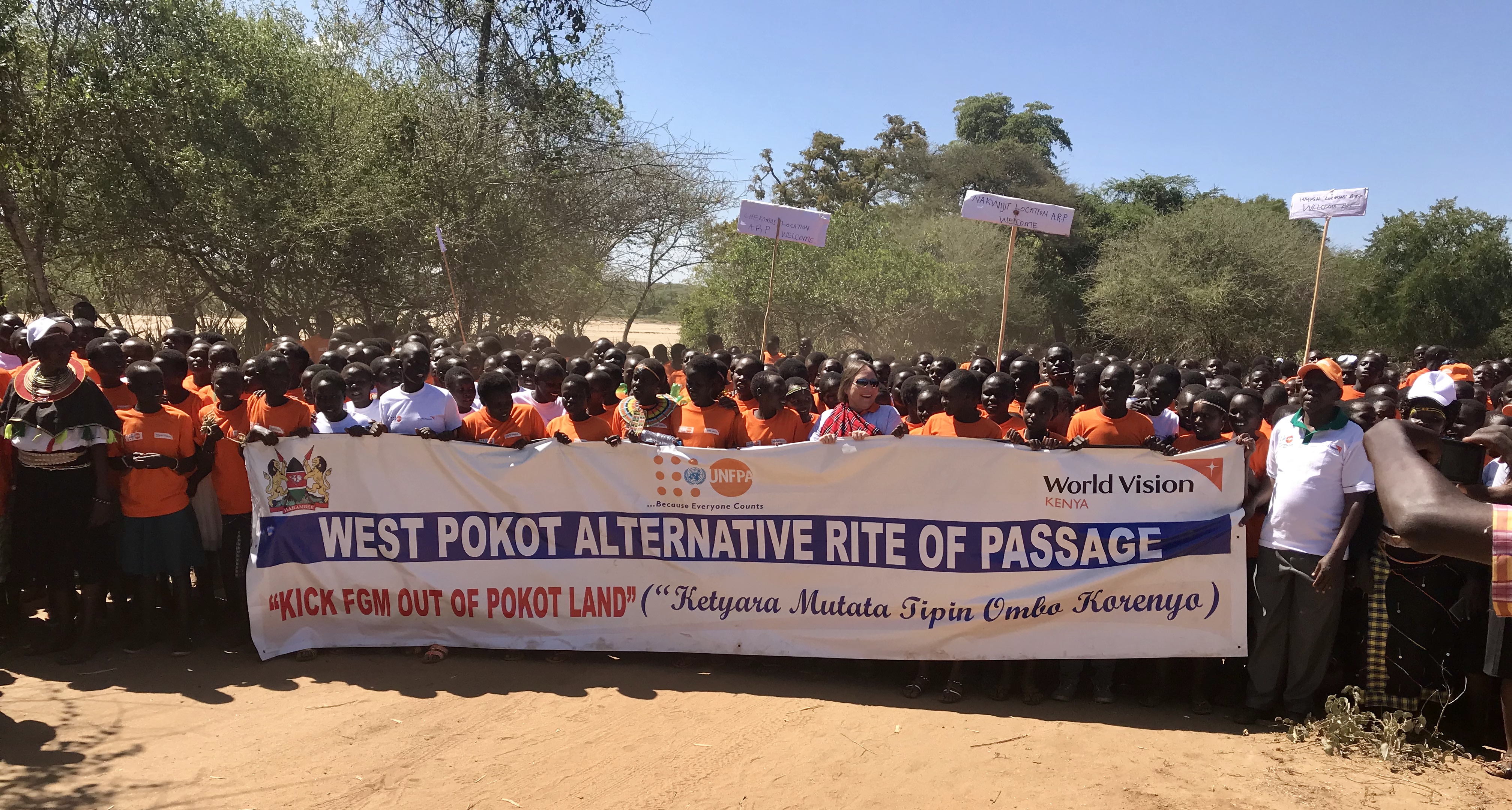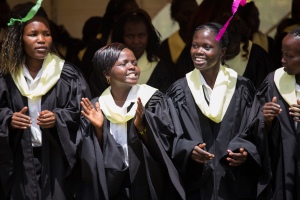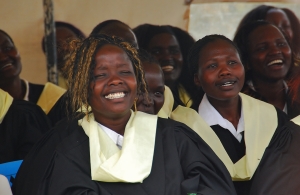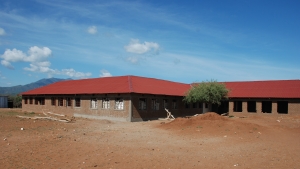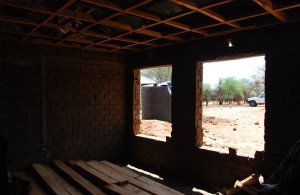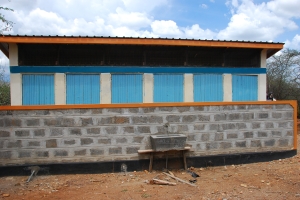Stand Where I Stood
In the northern areas of Baringo and West Pokot Counties, the land is dry and harsh with difficult terrain.
This northern area is remote and for years there were no reasonable paved roads yet alone even reasonable dirt roads to reach the areas where many people call home. The government has started investing in the road infrastructure and change is evident but there is so much more the government knows they must do to make these areas accessible.
For our visit last October, the community spent several days prior manually hacking down trees and cleaning brush by hand so that the World Vision vehicles could make it to where we needed to go and commission a future school site. Yet one of the truck tires was punctured while driving in!
Being Present
It’s easy to read about a place but it’s quite another to stand there within a community and be present in the surroundings, witnessing the impact on people. I kept imagining the struggle of waking up every day with the priority to secure the basic things needed to live: find water, pasture for animals, grow or source food, make money somehow – with the additional impacts of the longest and most severe drought in recent history! It must take all one’s energy and intellect to just try to make it every day and if you don’t, there are real consequences. During our visit, we heard from so many adults that they never went to school as a child – schools were either not there or were impossibly far to reach. In their childhoods, ever-present was the priority of daily life in a dry rocky land that dictated children must be part of doing the necessary work too.
For generations, when the old ways were the only way to live and families needed the bride price for their girls to financially survive, child marriage for girls and child labor for boys were the norms, and the brutal practice of Female Genital Mutilation as a rite of passage into womanhood lived on.
Until Now
All of this context makes what’s happening now and what we are witnessing so breathtaking in its impact!
The Kenya Big Dream is a multi-sectoral community-based program that dreams of a day when no girl will be married off as a child and must endure Female Genital Mutilation as a prerequisite for that marriage. The Kenya Big Dream dreams of a day when all children live without violence and girls and boys can create a future of their own design. Going to school is part of that dream. In next blog, I will discuss in more detail the livelihood development and attitude changes occurring as part of the Kenya Big Dream programming that is making such a profound difference in the lives of men and women. These changes are creating a foundation for the widespread embrace of education for girls and boys – that’s where this story focuses.
Education is life giving and creates hope!
In the beautiful area of Akoret in northern Baringo County there has never been a secondary school. The nearest secondary school is so far away it’s almost impossible for anyone in the community to send their child there. Prior to the Kenya Big Dream, for children in this region whose parents didn’t have money to send their kids away to a boarding school, children’s education ended early and their lives as adults began. Girls were booked (betrothed) by age 8 or 9, subjected to the brutal practice of female genital mutilation, and married off at age 12 or 13; young boys took on the full-time duty of caring and raising livestock and some were groomed to become rustlers.
Access to education creates a powerful, tangible hope for a far better future. It also provides an alternative to child marriage and child labor.

World Vision discussed with the community the possibility of building the first ever secondary school in Kamurio to create hope-filled futures without the harmful old ways for girls and boys.
The community met with their leaders, agreed and in an act of profound commitment decided to donate 28 acres of land to build a school! For this reason, we visited last October and participated with the community as they formally donated their land.
Living Stones
The phrase ‘living stones’ means different things to people. For this blog, I am using ‘living stones’ in the context of the community in Kenya we visited, Kamorio in Akoret. Moses Chepkonga, Kenya Big Dream Program Director for World Vision described a ‘living stone’ as a child full of their life-potential but not in school and living in the old ways, as a stone per se.
Moses led us all as we gathered together for this important land commissioning. The community leaders formally donated their 28 acres of land to the Baringo County authority and the Education Director for Baringo County formally committed to register the school with Kenya’s Department of Education, provide teachers and other resources.
You’ll see here Jacqueline Rioba, World Vision’s acting National Director for this event
Then something quite profound happened. Two boys had snuck into our ceremony and were sitting in a tree watching all that was going on. Moses stopped what he was doing, spoke with the boys and asked them to come join us.
We learned neither of these boys were in school. They were examples of the ‘living stones.’ To commemorate what this day meant, a day of Hope, Moses had each person in the community and in attendance select a stone big or small to represent a child who was not currently in school and add it to the pile. The boys also selected stones and added theirs too. Then we gathered in a large circle around the boys and the pile of symbolic stones and prayed over them and each child a stone represented.
The plan is to cement these stones together to be used as marker of bringing hope and transforming the lives of ‘living stones.’
I had goosebumps of excitement for the unstoppable hope that was being created that day!
“We have seen God’s face turn to us”
Thursday, February 9, 2023 was a huge day for the Kamurio community in Akoret. It was the day to lay the first foundation stone for the first ever secondary school in Akoret.
World Vision Kenya National Director, the Governor of Baringo County, Member of the Kenya Parliament – Tiaty, the County Commissioner, the Baringo County Education Director and many more dignitaries were in attendance to show their support and pledge resources for the success of the school.



One community member so overwhelmed by all that had happened in the last few years said to me “Before, all we could see was God’s back and we felt left behind. Now we have seen God’s face turn to us.” The smile on his face was brighter than the sun!


There is hope in this land and hope realized is unstoppable. Children will realize a future without FGM and other forms of violence. They will be able to create futures of their own design.
Let’s get to work!
The Kenya Big Dream is accelerating the change in hearts and minds at a pace that is breathtaking. My recent visits were to communities where World Vision had been working for less than 2 years, and already the practice of FGM is being put in the past. This is a stunning breakthrough! If you’ve been a supporter of the Kenya Big Dream my prayer is this blog will bless you and give you confidence that what you’re supporting works both now and in the future. Thank you!
If you’d like to learn more or give to the project, please visit Kenya Big Dream | World Vision Philanthropy






